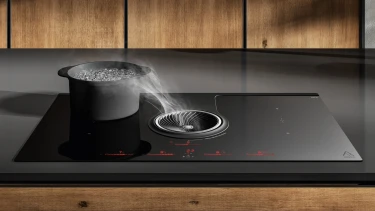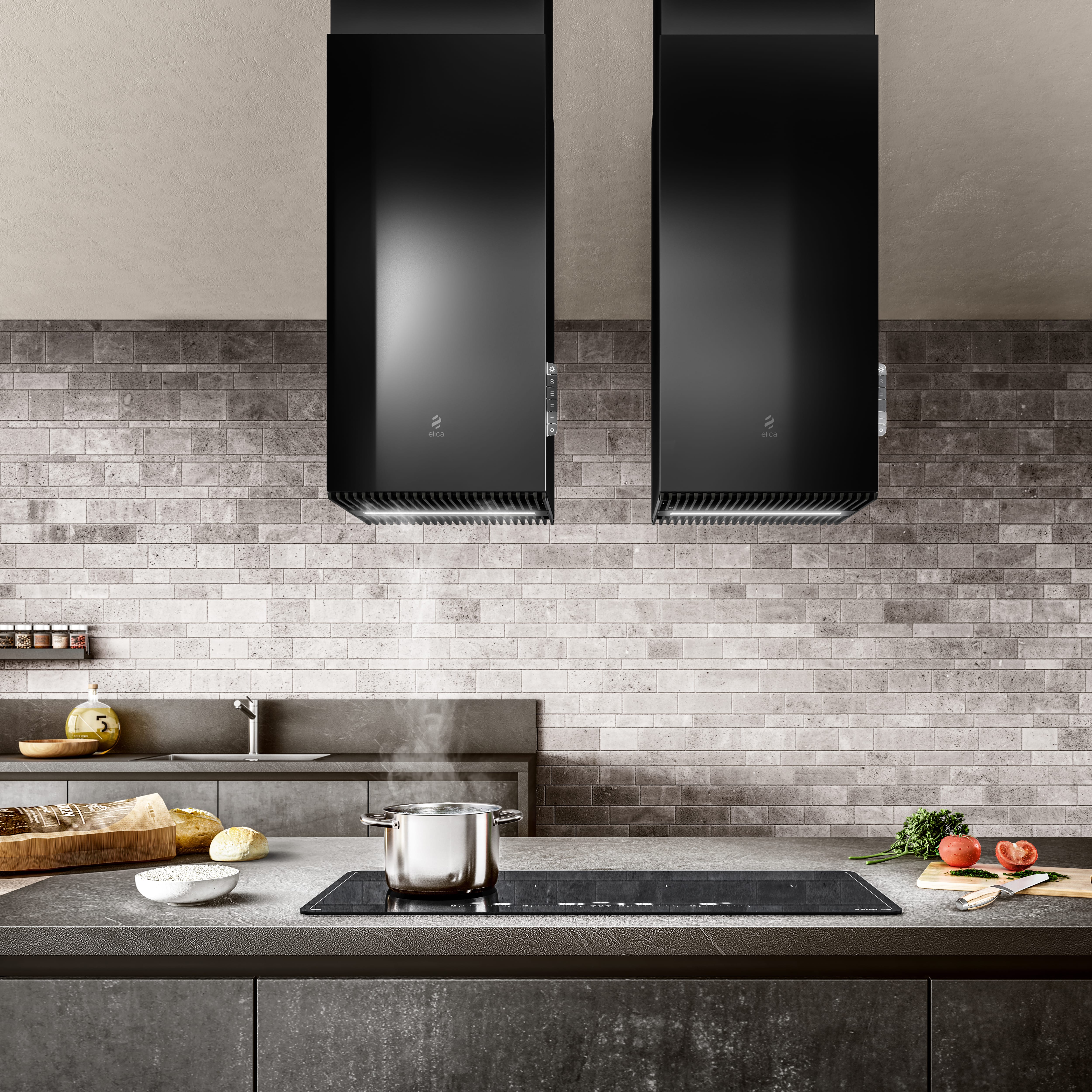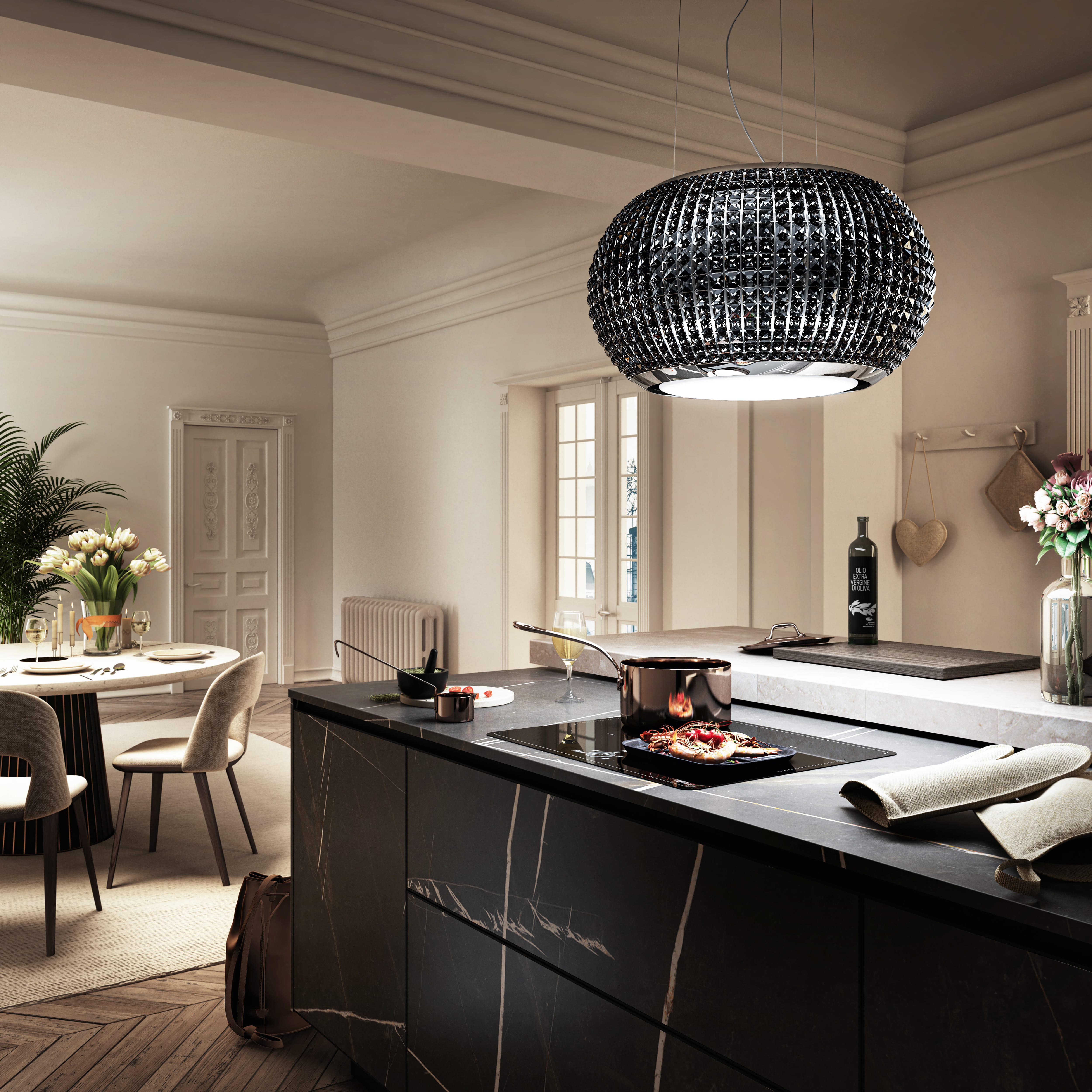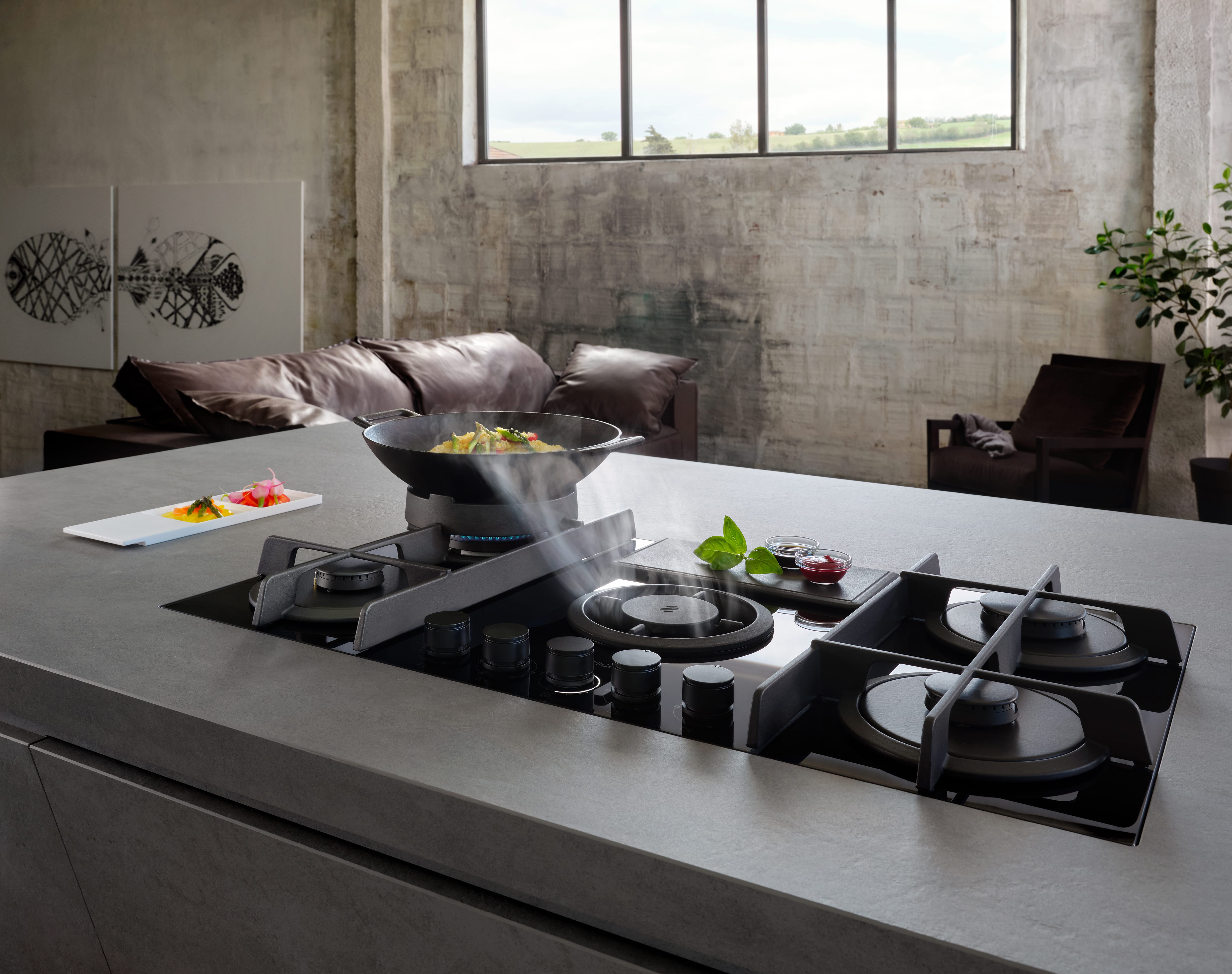
How to get rid of kitchen odors
Odors created when using the hob, can be a big problem for livability in the kitchen. Cooking vapors, substances released into the air and other organic molecules released when cooking may be the cause of unpleasant odors, unbearable for anyone looking to enjoy social moments in this living space.
The idea of today’s modern kitchen is that of a place for sharing and togetherness, where meal preparation is a relaxing moment to be enjoyed in good company: this is why it is useful to have a strategy to keep such spaces smelling pleasant. Here are some useful tips and top technology to effectively eliminate kitchen odors.
Kitchen odors: the role of the hood
Your best ally against the formation of unpleasant odors in the kitchen is the hood. Its ability to control the flow of air in the kitchen, makes it a major player in the fight against bad odors.
Kitchen hood operation follows a very simple principle: extracting air from above the hob - that ‘part’ of air where odors mainly accumulate- and exchange it with clean air. Actually, this operating principle results into two possible types of air extraction systems:
-
Duct out hoods, where an extractor fan removes odors from over the hob and eliminates them by conveying them outside through a duct. In this case, odor removal occurs by via
real air exchange.
-
Filtering hoods, where, in addition to the extractor fan, there is a filtering system for organic molecules responsible for unpleasant cooking odors. The molecules remain trapped in the filter and odors are eliminated directly in the extracted air flow, so to allow for internal air recirculation.
Hoods are much more than functional elements for the disposal of air and elimination of odors. Modern kitchen hoods, in fact, combine function with highly refined aesthetic solutions: the Elica catalog offers suspended, ceiling, retractable and many other kitchen hoods types that can completely redefine the design of your kitchen, thanks to their sophisticated shapes and integration with innovative lighting systems.
The selection of the best hood to suit your kitchen is the first important step in managing odors. Some parameters to consider are:
-
The air-flow rate, i.e. your hood air exchange capacity. A little trick: to quickly calculate the best extraction flow-rate for your kitchen just multiply the value in cubic meters of the room by 10.
-
Filter type, from grease ones for duct out hoods, to activated charcoal ones for filtering hoods.
Odor elimination: tips for your kitchen
A good part of odor elimination in the kitchen depends on the selection of the most suitable hood. But what can we do to ensure that our hood efficiently eliminates kitchen odors over time?
The first tip is to follow the hood maintenance instructions. High technology kitchen hoods are extremely autonomous and smart tools; however they still require minor cleaning operations:
-
Grease filter cleaning, i.e., stainless steel or aluminum grids that retain greasy substances present in cooking vapors, by hand washing using specific detergents (such as those proposed by Elica) or by washing in the dishwasher at a low temperature.
-
Replacing activated charcoal filters, should filtering hoods be equipped with non-regenerable odor filters: when they lose their filtering capacity and begin to re-introduce bad smelling air back into the environment.
-
Cleaning long life odor filters, which require maintenance every 2-3 months by handwashing or washing in the dishwasher, and after drying in the oven to remove any residual humidity.
-
Regeneration of ceramic odor filters, maintained by heat regeneration in the oven at 200° every 2-3 months.
For more information on cleaning and regeneration of odor and grease filters click here
Another essential aspect is calibrating the extraction air flow- rate: select the minimum extraction air-flow value based on the type of cooking and the number of burners in use, so that the odors remain over the hob and the hood can extract them completely. Latest generation Elica hoods, have integrated into their IoT control system, the possibility of controlling the extraction system remotely, along with automatic features that maintain extraction system operation even after the burners have been switched off, until air has been properly exchanged /filtered.
With just a few steps and by selecting the most suitable hood, effectively and continuously removing kitchen odors will no longer be a problem.


